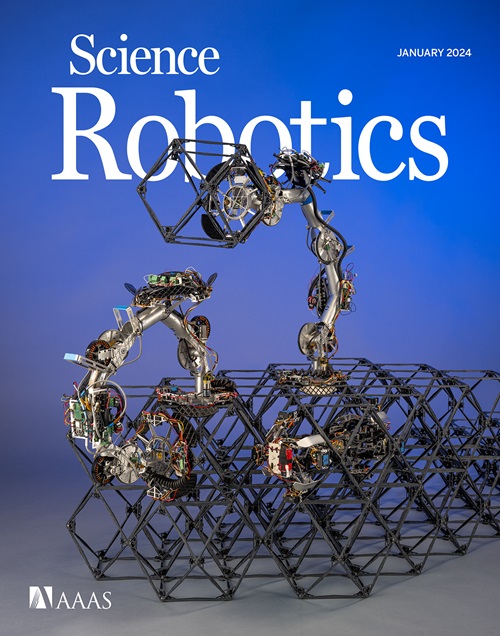基于学习的机器人操作动力学模型综述
IF 27.5
1区 计算机科学
Q1 ROBOTICS
引用次数: 0
摘要
预测物理相互作用影响的动力学模型对于机器人操作的规划和控制至关重要。尽管基于物理原理的模型通常泛化得很好,但它们通常需要完整的状态信息,而在复杂的现实场景中,这些信息很难或不可能从感知数据中提取出来。基于学习的动态模型提供了另一种选择,它纯粹从感知到的交互数据中派生状态转换函数,从而能够捕获复杂的、难以建模的因素和预测的不确定性,并加速通常对实时控制来说太慢的模拟。最近在这一领域的成功已经证明了机器人能力的显著进步,包括对可变形物体、颗粒材料和复杂的多物体交互(如装载和包装)的长期操作。这些研究的一个关键方面是状态表示的选择,它决定了场景动态降阶建模的学习系统中的归纳偏差。本文提供了一个及时和全面的回顾当前的技术和权衡在设计学习动力学模型,强调他们在提高机器人能力的作用,通过集成状态估计和控制,并确定关键的研究差距,为未来的探索。本文章由计算机程序翻译,如有差异,请以英文原文为准。
A review of learning-based dynamics models for robotic manipulation
Dynamics models that predict the effects of physical interactions are essential for planning and control in robotic manipulation. Although models based on physical principles often generalize well, they typically require full-state information, which can be difficult or impossible to extract from perception data in complex, real-world scenarios. Learning-based dynamics models provide an alternative by deriving state transition functions purely from perceived interaction data, enabling the capture of complex, hard-to-model factors and predictive uncertainty and accelerating simulations that are often too slow for real-time control. Recent successes in this field have demonstrated notable advancements in robot capabilities, including long-horizon manipulation of deformable objects, granular materials, and complex multiobject interactions such as stowing and packing. A crucial aspect of these investigations is the choice of state representation, which determines the inductive biases in the learning system for reduced-order modeling of scene dynamics. This article provides a timely and comprehensive review of current techniques and trade-offs in designing learned dynamics models, highlighting their role in advancing robot capabilities through integration with state estimation and control and identifying critical research gaps for future exploration.
求助全文
通过发布文献求助,成功后即可免费获取论文全文。
去求助
来源期刊

Science Robotics
Mathematics-Control and Optimization
CiteScore
30.60
自引率
2.80%
发文量
83
期刊介绍:
Science Robotics publishes original, peer-reviewed, science- or engineering-based research articles that advance the field of robotics. The journal also features editor-commissioned Reviews. An international team of academic editors holds Science Robotics articles to the same high-quality standard that is the hallmark of the Science family of journals.
Sub-topics include: actuators, advanced materials, artificial Intelligence, autonomous vehicles, bio-inspired design, exoskeletons, fabrication, field robotics, human-robot interaction, humanoids, industrial robotics, kinematics, machine learning, material science, medical technology, motion planning and control, micro- and nano-robotics, multi-robot control, sensors, service robotics, social and ethical issues, soft robotics, and space, planetary and undersea exploration.
 求助内容:
求助内容: 应助结果提醒方式:
应助结果提醒方式:


